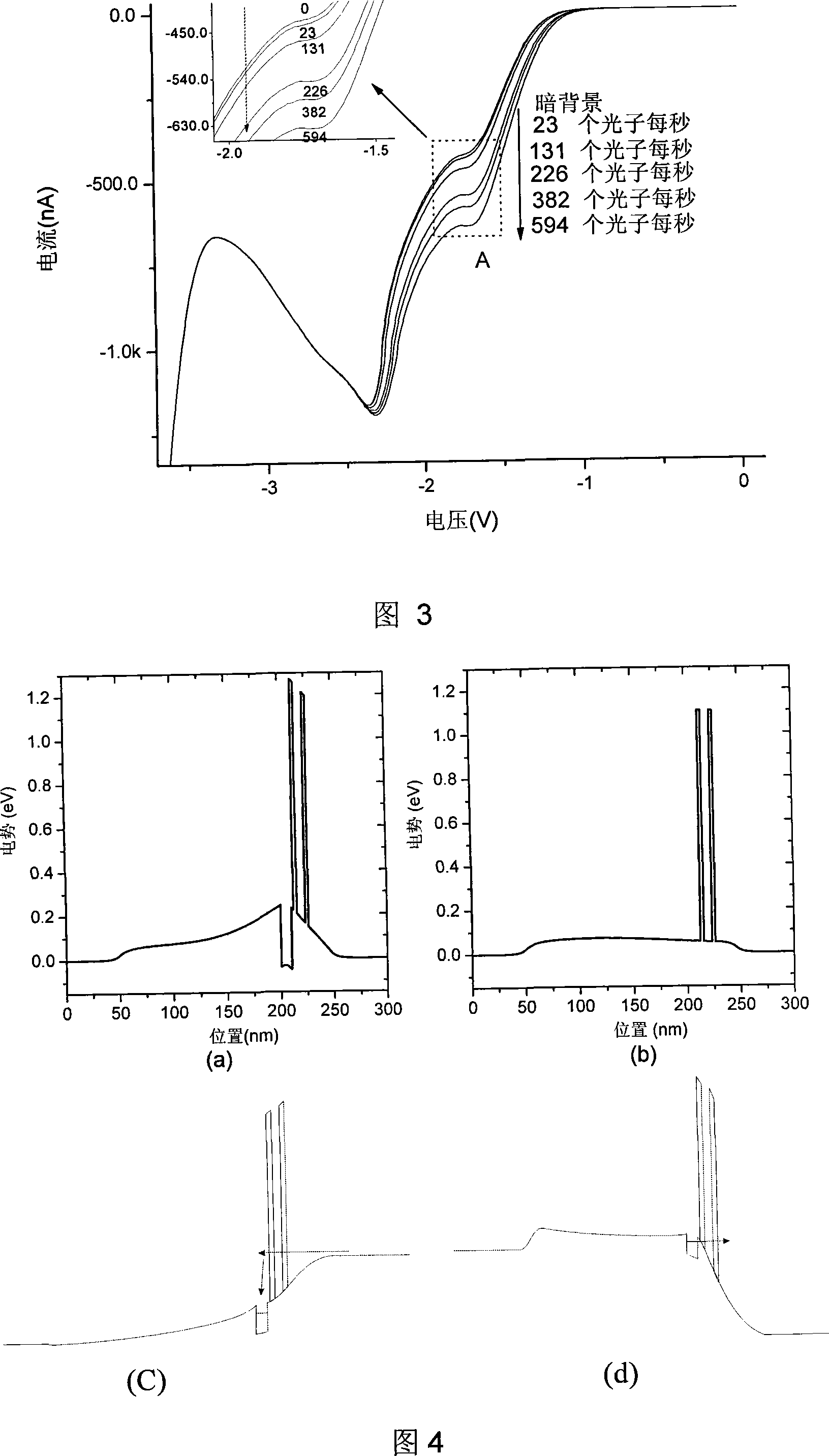Quanta point resonance tunnel penetration diode for faint light detection and its detection method
A resonant tunneling and quantum dot technology, applied in the field of visible light and short-wave infrared detectors, can solve the problems of difficulty in increasing the magnification of photogenerated carriers, too small tunneling current, hindering applications, etc., and achieve ultra-high photon detection capability. , the device structure is simple, the effect of ultra-high sensitivity
- Summary
- Abstract
- Description
- Claims
- Application Information
AI Technical Summary
Problems solved by technology
Method used
Image
Examples
Embodiment Construction
[0022] Below in conjunction with accompanying drawing and embodiment the specific embodiment of the present invention is described in further detail:
[0023] As shown in Figure 1, a 200nm GaAs buffer layer 2, a 10nm AlAs corrosion barrier layer 3, and a 380nm gradient n are sequentially grown on a semi-insulating GaAs substrate 1 by molecular beam epitaxy or metal organic vapor phase epitaxy. + GaAs (with a doping concentration of 1×10 18 -1×10 16 cm -3 ) lower electrode 4, 20nm GaAs spacer layer 5, 3nm AlAs barrier 6-1, 8nm GaAs potential well 6-2, 3nm AlAs barrier 6-1, 2nm GaAs spacer 7, the density is about 10 10 cm -2 InAs quantum dot layer 8, 150nm GaAs light absorption layer 9, 50nm n + GaAs (with a doping concentration of 2×10 18 cm -3 ) upper electrode 10. If the infrared band is to be detected, the GaAs absorption layer is changed to an InGaAs layer, and the photoresponse band can be modulated to short-wave infrared. AFM shows that the actual density of quant...
PUM
 Login to View More
Login to View More Abstract
Description
Claims
Application Information
 Login to View More
Login to View More - R&D
- Intellectual Property
- Life Sciences
- Materials
- Tech Scout
- Unparalleled Data Quality
- Higher Quality Content
- 60% Fewer Hallucinations
Browse by: Latest US Patents, China's latest patents, Technical Efficacy Thesaurus, Application Domain, Technology Topic, Popular Technical Reports.
© 2025 PatSnap. All rights reserved.Legal|Privacy policy|Modern Slavery Act Transparency Statement|Sitemap|About US| Contact US: help@patsnap.com


